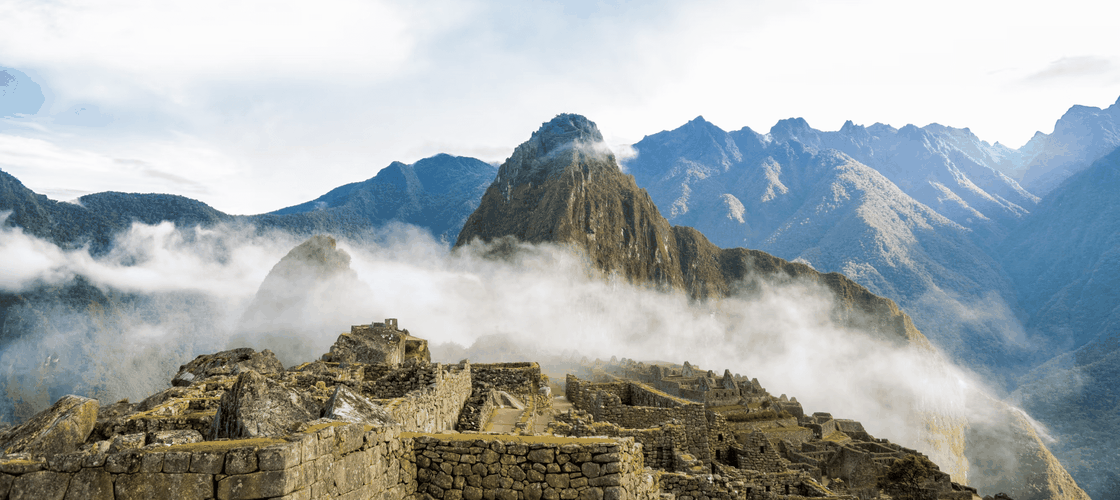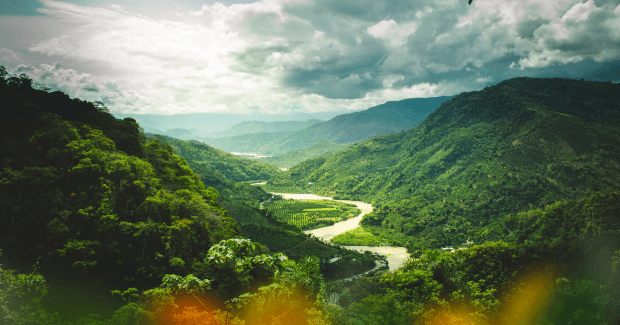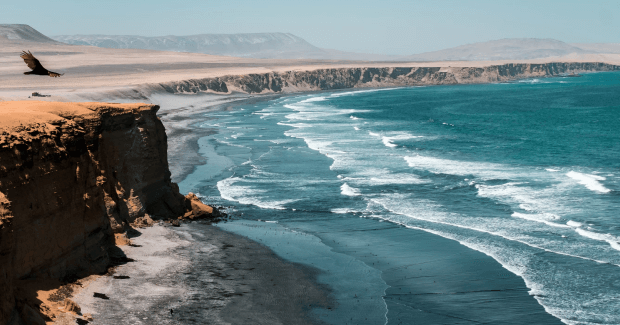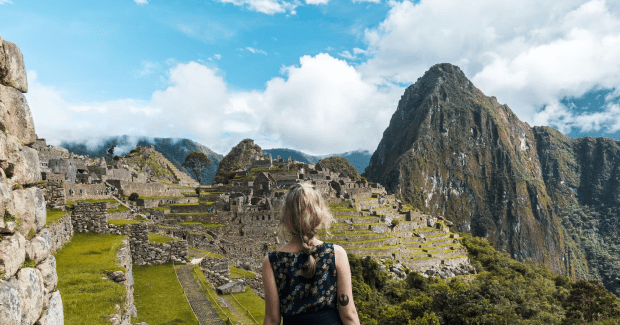Digital Nomad Visa Options For Peru

Quick Visa Facts
Visa length Maximum of 183 days
Possible to extend? No
Who can apply? Anyone (Some countries may enter the country visa-free)
Minimum Income Requirements N/A
Time for visa applications up to 30 days
Want to know if you can apply?
Complete a visa quiz and see if you qualify!
Quick facts about Peru

If you’ve been living as a digital nomad for a long time now, or if you’re just getting started, you’re probably wondering what your next destination should be. You probably haven’t considered living in South America, but you definitely should!
South America has many hidden treasures with unique cultures and interesting history. Peru is one of the most breathtaking countries in South America, and in recent years it has been catching the attention of many travelers.
Peru is in western South America. It shares borders with Ecuador, Colombia, Brazil, Bolivia, Chile, and the Pacific Ocean. Peru is a beautiful country you should add to your list of countries to visit as a digital nomad.
Capital Lima
Form of Government Unitary Republic
Population 34,294,231
Climate Subtropical desert & semi-tropical
Language Spanish
Currency Sol (PEN)

1 people in Peru!
Join the community of remoters!
Living in Peru as a digital nomad
Peru welcomes thousands of visitors each year. This beautiful country has so much to offer everyone who decides to spend a few days there—especially digital nomads, who stay in Peru for a more extended time than tourists.
Peru’s weather is varied. Even though the country is located in the tropics and features tropical rainforest climates, it also features desert and mountain climates. The weather will depend on the area of the country you decide to visit, but be prepared to experience the two main seasons: wet and dry.
Peru is a diverse country with plenty of amazing things to explore. While living in Peru, you’ll get the chance to witness breathtaking natural wonders, explore multicultural traditions, and savor delicious Peruvian cuisine.
Peru is friendly to digital nomads. The locals are pleasant and welcoming; they’ll show you the best places to visit while staying in their country. Peru has a fast-growing digital nomad community, especially in Lima. You’ll find coworking spaces, nice cafes, and fantastic accommodations.
Hand-picked for you: Digital Nomad FAQ – All your questions answered!
Attractions and best places to visit
Peru has plenty of tourist attractions and beautiful places for visitors to visit. It is a country of history, beauty, and adventure. The possibilities for travelers are endless!

Machu Picchu
The ancient Inca City of Machu Picchu is the most popular highlight in the country. Machu Picchu sits 300 meters above the Urubamba River in southern Peru, and in 1983 it became a UNESCO World Heritage Site. In 2007 it was voted one of the New Seven Wonders of the World.
This once-lost Inca City is an impressive combination of ruins and the spectacular mountains that work as a backdrop. While there, you can learn all about the Incas and follow the different paths that surround this ancient city. Afterward, you can go to Aguas Calientes, a town just below Machu Picchu
Chan Chan
Another fantastic archaeological site is Chan Chan, outside Trujillo, in northern Peru. It is the largest pre-Columbian city discovered. You can learn about Chimu Empire while exploring the labyrinth streets.
Nazca Lines
The mysterious Nazca Lines are another exciting attraction. They’re huge images on the desert floor, requiring an aerial view. There are over 70 images of plants, animals, and people. It is unknown who created the Nazca Lines, but many believe they’re the product of the Paracas and Nazca cultures between 900BC and 600AD.
Cities
But to experience authentic Peruvian culture, you must visit as many of their iconic towns and cities as possible.
Head towards Lima, the capital city of Peru, and walk around the Historic Center. It is a UNESCO World Heritage Site and a spectacular place to visit if you’re looking for beautiful architecture and local hotspots.
You can also head toward Cuzco, which is a stunning historic city. Walking down the streets of Cuzco feels like walking through a museum. Inca ruins are the foundation of many colonial buildings, with narrow streets that narrate this town’s great background.
Digital Nomad Hotspots
Lima is the city where most digital nomads decide to stay when they’re living in Peru. The capital city is also known as Ciudad de Los Reyes (City of Kings), and it is one of the largest cities in South America.
Lima is Peru’s political, economic, financial, industrial, commercial, and cultural center. Lima is ideally between the Pacific Ocean, a coastal desert, and multiple valleys. Here you’ll find plenty of options for accommodations, many restaurants, and other essential amenities.
Another famous city is Cuzco, located in the center of Peru, in the Sacred Valley. Even though it is a small city with an airport, it’s more peaceful than Lima. The lifestyle in Cuzco is slow-paced and is an excellent location closer to national parks and natural wonders.
Cost of Living
Overall, Peru is a relatively cheap city to live in. Especially if you’re used to US averages of prices, you’ll find that Peru is very affordable.
Peruvians use the Sol (PEN) as their official currency. $1 USD = S/.4 PEN approximately.
You can expect to pay around $450/month for a studio apartment in the city center. A larger apartment costs around $750/month.
A meal at an inexpensive place will cost you around $7.
When it comes to market prices, you’ll find the following average prices:
1ltr of milk $1.18
12 large eggs $1.82
16oz local cheese $3.45
1lb chicken breast $2.14
Bread $0.58
One of the downsides of Lima is traffic. The city is infamous for chaotic drivers that make traffic during rush hours a nightmare. The public transport in Lima consists of city buses. The fare per trip is $1. These multi-colored buses run all around the city, so you can easily hop into one to reach your destinations. Bear in mind that they make lots of stops along the way, so a trip on the bus is usually much slower than a taxi.
Digital Nomad Essentials

Internet
Peru has an average connection speed of 6.2Mbps and an average peak connection speed of 47.5Mbps. Internet access in Peru will depend on the region, but in big cities like Lima and Cuzco; you won’t find any trouble staying connected.
SIM cards
Peru has four big providers: Movistar, Claro, Entel, and Bitel. They offer different packages for a SIM card with mobile data. For example, you can easily purchase SIM cards at the airport or in shops around the city. Prices range from $1 – $5 for the SIM card with credit.
Additionally, you’ll find that many restaurants, bars, and coffee shops offer free Wi-Fi.
Is Peru safe?
Peru is a safe place to visit. But, of course, this doesn’t mean there aren’t any dangers, but they aren’t too different from the risks you’ll find in other big cities.

While visiting Peru, keep an eye out for petty theft. Thieves like to target tourists for pickpocketing or stealing from you. So always be careful with your possessions, especially if you’re traveling on the bus.
When it comes to COVID-19, the danger is moderate. Make sure you are vaccinated and up to date with your COVID-19 vaccines before traveling to Peru. Visit this website to stay up to date with any requirements or changes.

Our Community Drives it all
Join the community of remoters!
Visa Overview
Update
Peru has introduced a new digital nomad visa program, enabling remote workers to stay for a year with extensions possible. It’s designed for remote employees working for international companies, offering the chance to explore Peru while working remotely. Peru joins other South American nations like Argentina, Brazil, Ecuador, Colombia, and Uruguay in offering visas catering to digital nomads.
Unfortunately, Peru does not have a visa dedicated exclusively to digital nomads. However, this doesn’t mean digital nomads can’t spend extended time living in Peru. Instead, there are ways for remote workers to enjoy Peru without the need for a digital nomad visa.

If you’re a US citizen, you do not need a visa to enter Peru for tourism purposes. You may enter the country and remain there for a maximum of 183 days.
Digital nomads may enter Peru under a Temporary visa. It is technically a tourist visa, and you shouldn’t work with it. However, you would only get in real trouble if you start working for a Peruvian company without applying for a residence visa.
Tourist visas will allow you to stay in the country for 30, 60, 90, and 183-days. If you plan to stay in Peru for 50 days, you’ll receive a 60-day tourist visa. Unfortunately, you can’t extend the time of your tourist visa.

Our Community Drives it all
Join the community of remoters!
Who Can Apply for the Digital Nomad Visa for Peru
Many countries can enter Peru Visa-free, including the United States, European Union, Canada, and other countries. Check out this website for the complete list of countries that may enter Peru visa-free.
You must apply for a tourist visa if your home country is not on the list.
How Digital Nomads Can Apply for the Peru Visa

If you’re required to apply for a tourist visa, then you’ll need to follow the next steps:
Contact the Peruvian embassy in your home country and set up an appointment.
Obtain the complete list of documents required.
Gather all the documents and make sure they all meet the requested criteria.
Attend your visa appointment. Make sure to take all the requested documents with you.
Attend an interview with a consular officer.
Pay the visa fee.
Documents required to apply for the visa in Peru
Two copies of the Visa application form
Valid passport (for at least another six months)
Passport copies
Cover letter explaining the purpose of your trip to Peru
Round-trip ticket reservation to Peru
Travel Itinerary
Hotel reservation
Recent bank statements
Personal Income Tax Return (if applicable)
Know that the Purvian embassy may require additional documents during your visit.
How much does it cost?
The visa fee for the Peruvian tourist visa is $30

Our Community Drives it all
Join the community of remoters!
Timeline for Applying
The processing period for a tourist visa is up to 30 days, but many visas are processed within five days.
Taxes for Peru digital nomad visa
The Peruvian visa does not have a local income tax.

If you’re interested in other digital nomad visa options in South America, why not check out the visa for Brazil or Argentina?
Curious about what digital nomad visas you qualify for? Enter your details in our Visa Wizard to find out!
Author
Nadia Dardón is a freelance writer from Guatemala. In early 2022 she embarked as a digital nomad, traveling through Europe, focusing mostly on the literary history of each country. She has worked fully remotely for the past four years as a reader, writer, and content creator with experience creating pieces for different industries. She also has a personal blog where she writes about her cultural and literary travels.